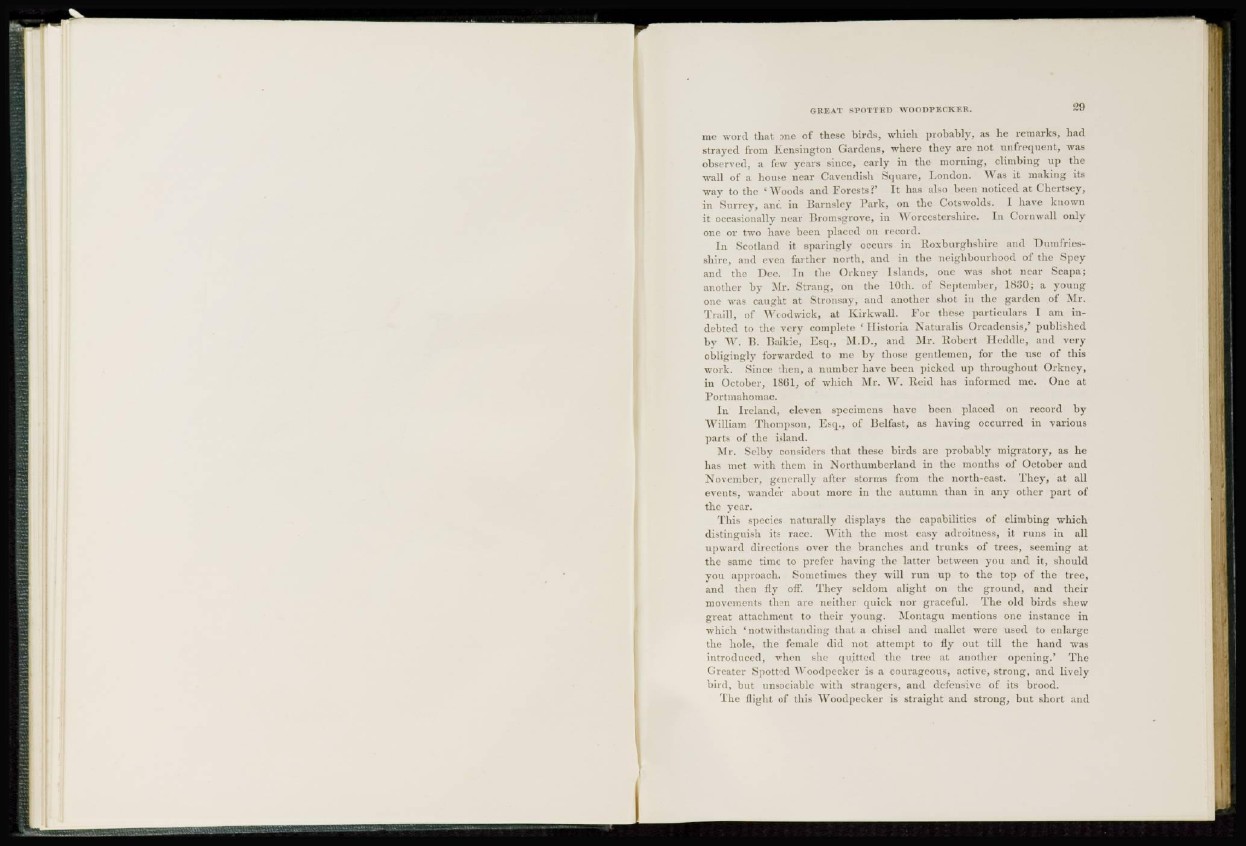
mo word that one of these birds, which probably, as he remarks, had
strayed from Kensington Gardens, where they are not unfrequent, was
observed, a few years since, early in the morning, climbing up the
wall of a house near Cavendish Square, London. Was it making its
way to the 'Woods and Forests?' It lias also been noticed at Chertsey,
in Surrey, and in Barnsley Park, on the Cotswolds. I have known
it occasionally near Bromsgrove, in Worcestershire. In Cornwall only
one or two have been placed on record.
In Scotland it sparingly occurs in Roxburghshire and Dumfriesshire,
and even farther north, and in the neighbourhood of the Spey
and the Dec. In the Orkney Islands, one was shot near Scapa;
another by Mr. Strang, on the 10th. of September, 1830; a young
one was caught at Stronsay, and another shot in the garden of Mr.
Traill, of Woodwick, at Kirkwall. For these particulars I am indebted
to the very complete * Historia Naturalis Orcadensis,' published
by W. B. Baikic, Esq., M.D., and Mr. Robert Heddle, and very
obligingly forwarded to me by those gentlemen, for the use of this
work. Since then, a number have been picked up throughout Orkney,
in October, 1861, of which Mr. W. Reid has informed inc. One at
Portmahomac.
In Ireland, eleven specimens have been placed on record by
William Thompson, Esq., of Belfast, as having occurred in various
parts of the island.
Mr. Selby considers that these birds are probably migratory, as he
has met with them in Northumberland in the months of October and
\ n\ ember, generally after storms from the north-east. They, at all
events, wander about more in the autumn than in any other part of
the year.
This species naturally displays the capabilities of climbing which
distinguish its race. With the most easy adroitness, it runs in all
upward directions over the branches and trunks of trees, seeming at
the same time to prefer having the latter between you and it, should
you approach. Sometimes they will run up to the top of the tree,
and then fly off. They seldom alight on the ground, and their
movements then are neither quick nor graceful. The old birds shew
great attachment to their young. Montagu mentions one instance in
which 'notwithstanding that a chisel and mallet were used to eidarge
the hole, the female did not attempt to fly out till the hand was
introduced, when she quitted the tree at another opening.' The
Greater Spotted Woodpecker is a courageous, active, strong, and lively
bird, but unsociable with strangers, and defensive of its brood.
The flight of this Woodpecker is straight and strong, but short and